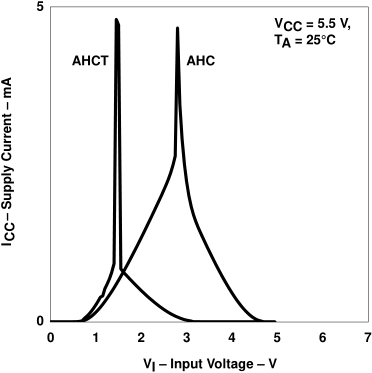Other Parts Discussed in Thread: SN7404, SN74LVC8T245, SN74AHCT541, SN74AHCT244
Hi,
In a board that I'm designing, I need to "convert" a 3.3V digital signal into a 5V digital signal. So, I think what I need is a non-buffer that when the input is 3.3V the output is 5V. I research a little, and I found the SN7407DR, that has a VIH = 2V and VOH = Vcc, so I think that works.
But, I found the SN74HCS244-Q1 - it is a Schmitt Trigger input, different from the SN7407DR, which is an open collector, so I think the SN74HCS244-Q1 is better in this way. But, I didnt find on the datasheed his VIH and VOH, so im not sure if it can be used on my project.
Can someone help me? Which one is the best for my purpose? Or should I use another solution?


